POLISH STAIN REMOVAL TIPS
Are you constantly afraid of removing polish only to discover your nails are now a permanent unnatural color?
In this article, you’ll learn:
- How to reduce the potential of color staining
- How soaking, rather than scrubbing, is a better way to remove polish
- How manicure clips can help the process even more
Polish Stain Removal Tips
You’ve just removed a gorgeous, dark blue and look down in horror—your nails are now a lovely shade of blue!
This recently happened to me with China Glaze Blue Bells Ring #1119.
Of course instead of panicking, I get all geeky! “Oooo, this will make a great article!”
Since I’ve read just about every nail blog post about polish stain removal, I thought I would share my insights gained by de-bluing my nails.
I’m also including the stain removing methods I don’t recommend and why they’re a bad idea.
My Steps For Preventing Polish Stains
1. In spite of using two coats of basecoat to protect my nails, expensive polishes can stain too.
2. It’s extremely critical to use my Soak and Swipe™ method of polish removal, using pure acetone, with plenty of soaking time—especially if you’re dissolving 5 to 10 layers.
3. Remove polish in ONE firm, clean stroke.
4. Remove any remaining polish with a CLEAN piece of cotton and A LOT more acetone.
5. If the nail plate looks stained a lighter shade of the color, use a clean cotton piece saturated with A LOT of acetone and keep wiping/scrubbing. Focus on wiping nail tip to proximal fold (“cuticle” line), since nail cells grow layered like house roof shingles, you want to go against the grain.
6. Use Q-tips saturated in acetone to get staining at the proximal fold curve.
7. Wash hands with warm water and soap.
8. Scrub nails top and bottom with a nail brush. Rinse. Dry.
9. Apply your favorite penetrating nail oil generously and rub it in. (Blue stains are all gone. 🙂 )
Soak & Swipe™ Polish Removal
Acetone saturation is very important key to remove polish quickly—and it’s extremely COLD! It feels like you’re soaking in ice because acetone evaporates so quickly.
This is why I recommend adding a moisturizing additive acetone or to coat your skin with a cheap kitchen oil before removing your manicure.
It blocks some of that numbing cold and prevents acetone from dissolving your precious body oil and drying out your skin.
I also love using manicure clips to hold the cotton on the nail plate. The clips trap in your body heat to warm the acetone which makes it dissolve lacquer faster.
I unroll a cotton ball and cut it into small pieces. Saturate the cotton with acetone, apply to the nail and soak for one to three minutes.
Then saturate a second piece of cotton with acetone to wipe off the first piece of cotton. This is an important step as well you help you get a firm grip to remove the polish in one, clean swipe.
Don’t use your soaking cotton to remove any remaining polish. You’ll start scrubbing. Just get a new piece of cotton.
In Desperation – Removing Immediate Stains
If your nails are still tinted after trying all of my tips, you may need to bring out the big guns….. or big goop.
Anutka at Wacky Laki has put together a great tutorial using whitening toothpaste for immediate polish stain removal.
Fortunately, I haven’t had to use this technique, but it’s nice to know it’s an option as a last resort.
No Buffing Please!
It’s surprising to me how many established nail bloggers recommend buffing the stain out—even though this is a horrible idea!
It’s quite understandable why they recommend it though.
Immediate polish stains usually are because polish pigment has settled into the top few layers of nail keratin.
This happens really easily with the traditional polish removal method—saturate a cotton ball and scrub the heck out of it until the polish is dissolved.
Even though our nails appear smooth, under an electron microscope, it’s possible to see that our nails are made up of hundreds of thousands flattened keratin cells.
As in the photo to the right, you can see the microscopic gaps between the cells.
Polish pigments are small enough to settle into those gaps with enough force.
The acetone is dissolving the colored lacquer, but your scrubbing action is driving the dissolved pigments into the top layers of keratin.
The traditional thinking is, “I’ll just buff the stain out, since it’s only in the top few layers.”
But like I addressed in my previous article about why buffing out ridges is actually making our nails weaker, the same holds true when buffing out stains.
You only have about 50 layers of keratin in your nails.
It’s a misconception that buffing a few layers won’t hurt. In truth, it only makes your nails thinner, weaker, and more prone to breaking.
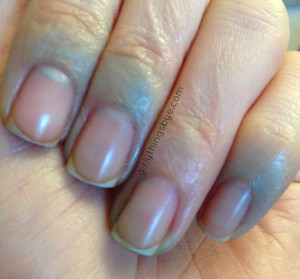 Who’s Guilty?
Who’s Guilty?
The photo to the right by GirlyThingsBye demonstrates perfectly how scrubbing can even cause the pigment to be pushed into the top layers of our skin too!
This photo was taken after several rounds with acetone and she says it took several days for her skin to return to normal flesh color.
This is leads me to think . . . who’s the real guilty party with most polish staining?
You know that saying… “When you’re pointing at someone else, you have four fingers pointing back at you.”
Should polish brands be condemned for causing staining? Hummmmm.
Be Careful with the DIY Whitening Soaks
There a couple of other methods recommended by bloggers which I don’t recommend.
They are soaking your nails in hydrogen peroxide, lemon juice or denture remover tabs.
These techniques may work, but at what cost to the health of your nails?
One of the very worst things you can do to your nails is to soak them for 5-15 minutes in a water-based solution with some additives.
Even though our nails can soak up three times their weight in water, it’s very damaging to the keratin layers.
Where does that water go?
In between every single nail layer, slowly pushing the layers apart.
Our nails are resilient, but not for long. I explain this process in more detail here: https://www.nailcareheadquarters.com/How Water Damages Nails
In Conclusion
Hopefully, this clears up some confusion about polish stain removal.
The best method is prevention.
It starts with using two coats of a high-quality base coat and to completely dissolve the polish before using only one stroke to remove it.
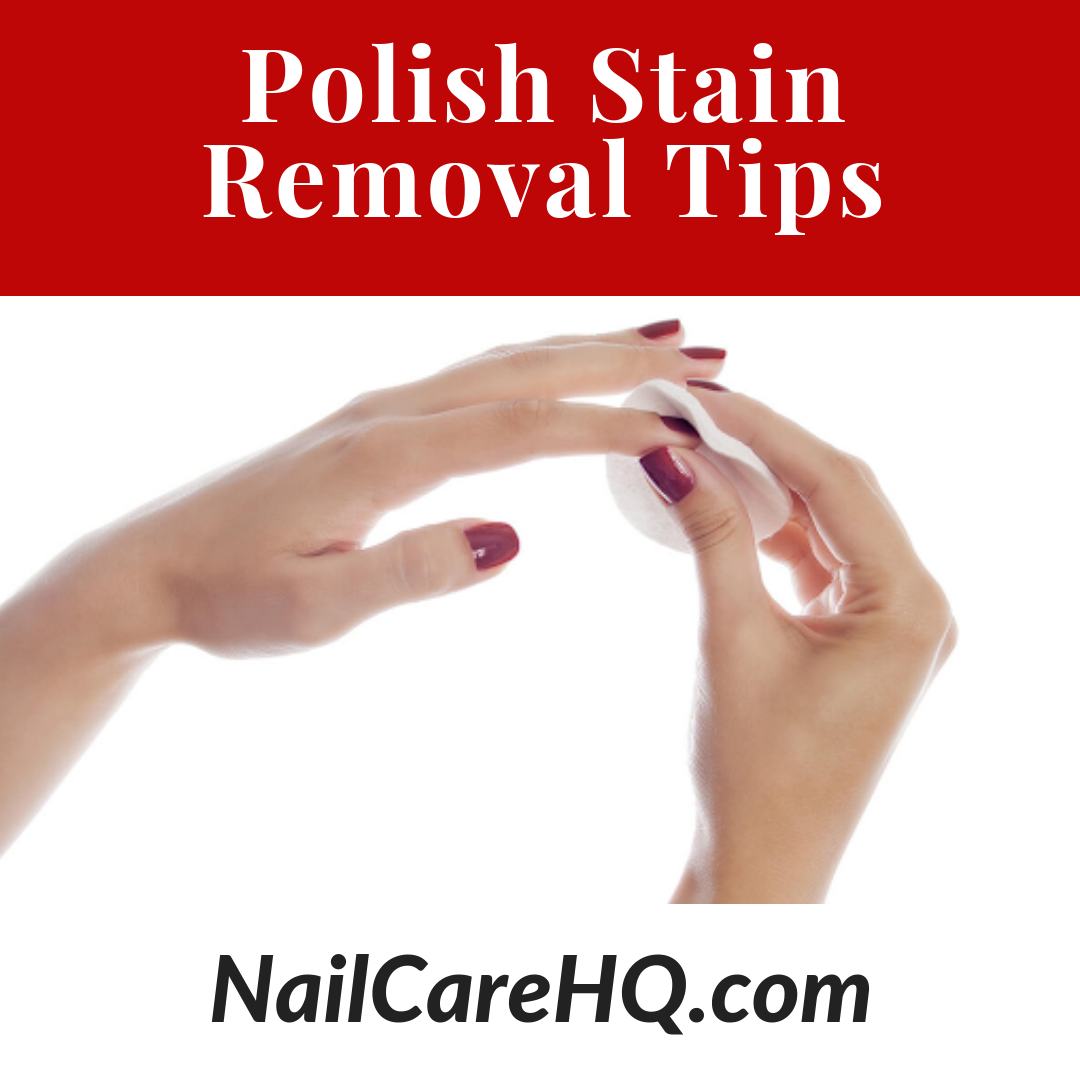
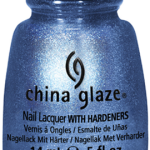
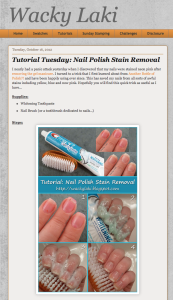
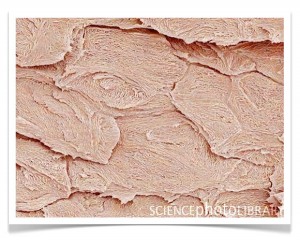
Great article. I have a few blues that stain even with the one cotton ball method. But I’ll try the wiping from tip to cuticle next time! The picture of the nail plate was really interesting!
Martha, thank you. Make sure that when you first remove the polish you wipe from eponychium to tip. Then any staining that remains can be scrubbed from the other direction with acetone and a clean piece of cotton ball. ~Ana
I’ve had that Zombie fingers look after trying a lovely blue..really my first trial of a ‘alternative to normal’ nail color..It’s funny, I swore that I’d stick to the light corals and mauves I’ve always worn after the Zombie fingers for 3 days-then I found a fab. Turquoise color and thank goodness, it doesn’t stain.
As an elderly woman, I wonder if there are any nail issues I should look out for that go along with aging. I have very dry skin and last week when I did my initial 5 days of Pure Oil treatment I’d rub the extra oil into my hand, arms and elbows. I was putting the oil on about every 40 minutes so I’m sure I used enough to get the initial deep penetrating of the oil done. I’ve also started using kitchen gloves when cleaning or doing dishes…something I quit doing when my nails started to look bad. Now I’m hoping for nice nails again, and I’m back to using kitchen gloves.
My major nail issue is splitting of the nails at the end of my fingernail, which causes them to break off and thus are short and jagged. When I started my initial oil treatment, I filed all my nails short and started with fingernails that hadn’t been weakened by splitting. I put my first polish on after 5 days of oil treatment because I was still soaking it up and did my mani very carefully.
I’m really hoping to have nice nails again when I go on a cruise over the Christmas holidays-I love wearing my collection of turquoise and silver jewelry and hope to find a dynamite turquoise or teal polish to wear.
Wish me luck!
Elle in Oregon
Elle,
Good for you to listen to your skin and apply Bliss Kiss™ Pure Oil to those areas. My boys apply Pure™ all over their body after each shower to help tame their eczema symptoms. It really helps when they are oiling regularly. You also may be very interested in the new Whipped Body Fluff Mrs. Chemist (my Mom) is working on. Her skin has gone from dry, painful and leathery to really soft with no heel-cracking this past summer. We’ll be bringing that out as soon as we receive our order of supplies.
It’s good that you filed your nails shorter. Realize that your nails will be weaker for little bit until they’ve absorbed as much oil as possible and the cells that haven’t been exposed to a lot of water absorption reach your tips. Make sure you’re protecting your nails with the Fab 5 Polish Wrap https://www.nailcarehq.com/polish-chipping-fab-five-polish-wrap/
Thanks for stopping by! ~Ana
Thank you for posting this!!! I wear either nudes or very dark polishes, so I’m constantly running into this problem. So many good tips!!!